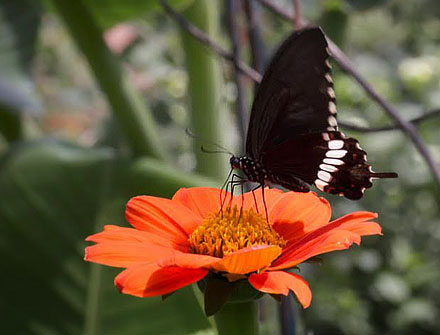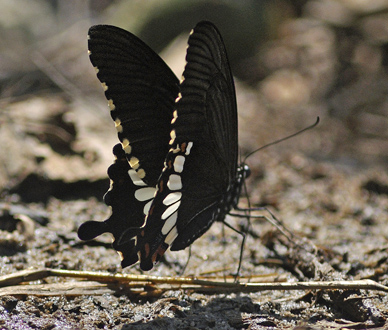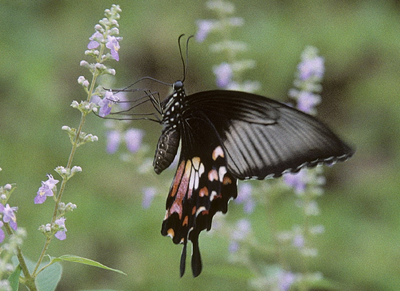Common Mormon
Papilio polytes
First update d. 21 february 2016
Last update d. 30 october 2024
Common Mormon, Papilio polytes (Linnaeus, 1758) female. Chiang Mai, Thailand February 9, 2016. Photographer; Henrik S. Larsen
| Common
Mormon, Papilio polytes (Linnaeus,
1758) is a common species of swallowtail
butterfly widely distributed across Asia. Habitat:
The common Mormon prefers lightly wooded country,
but is present everywhere and high up into the
hills. Taxonomy: Mimicry: This butterfly is known for the mimicry displayed by the numerous forms of its females which mimic inedible Red-bodied Swallowtails, such as the Common Rose and the Crimson Rose. The webmaster have seen this species in Chitwan National park in Terai, Nepal back in february 2000. GBIF: Global Biodiversity
Information Facility. From Wikipedia, the free encyclopedia. |
| Common Mormon, Papilio polytes ssp. polytes (Linnaeus, 1758). Chiang Mai, Thailand february 9, 2016. Photographer; Henrik S Larsen |
Common
Mormon, Papilio polytes ssp.romulus (Cramer, 1775). Kulekhani, Nepal d. 28 februar 2011. Photographer; Troells Melgaard |
Common
Mormon, Papilio polytes ssp. rubidimacula (Talbot, 1932) female. China july 2006. Photographer: Tom Nygaard Kristensen |
Common Mormon, Papilio
polytes ssp.romulus (Cramer, 1775)
two male.
Chitwan National
Park. Nepal october-december, 1995. Photographer: Lars Andersen
The Blue Hour In the evening when I sat by the riverbank in the small village of Sauraha with a cocktail called "Rhino's Horn" and watched the sunset. There was fantastic wildlife here, you could see the shepherds coming home with the goats and water buffalo, and the elephants coming home from work in the forest, as well as tourist jeeps driving across the river back from the Jungle Safari. Over the river sailers and swallows fly, as well as seeing the kingfisher stand on spinning wings and suddenly dive down for a fish. Lars Andersen: A History of the Wildlife on the River in Chitwan National Park, Nepal. February 2000. |
Indian Rhinoceros, Rhinoceros unicornis. In the evening during the blue hour at Sauraha, Royal Chitwan National Park february 2000. Photographer: Lars Andersen
_______________________________



